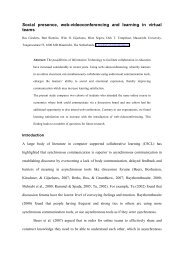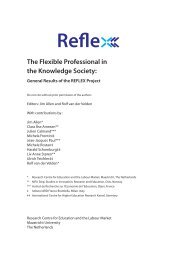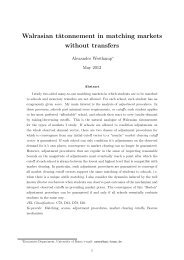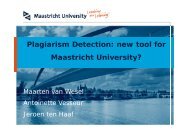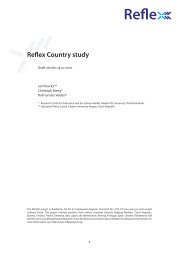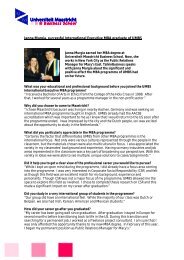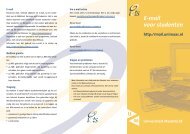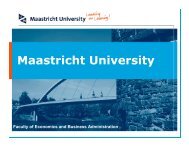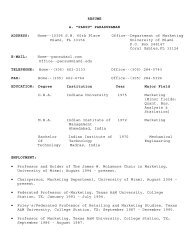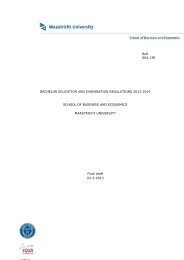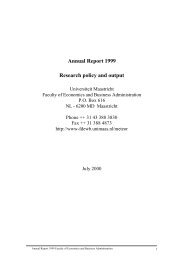proceedings of Student Mobility and ICT: Can E-LEARNING
proceedings of Student Mobility and ICT: Can E-LEARNING
proceedings of Student Mobility and ICT: Can E-LEARNING
Create successful ePaper yourself
Turn your PDF publications into a flip-book with our unique Google optimized e-Paper software.
elevant course, based on specified st<strong>and</strong>ards. The report also recommends concepts on which the student<br />
can begin working; by clicking on any <strong>of</strong> these concepts or items the student gains immediate access to the<br />
learning module.<br />
Some key features <strong>of</strong> the assessment module are (see Figure 1 for a sample):<br />
• All problems require that the student produce authentic input.<br />
• All problems are algorithmically generated.<br />
• Assessment questions are generated from a carefully-designed repertoire <strong>of</strong> items ensuring<br />
comprehensive coverage <strong>of</strong> the domain.<br />
• The assessment is adaptive: the choice <strong>of</strong> each new question is based on the aggregate <strong>of</strong><br />
responses to all previous questions. As a result, the student's knowledge state can be found by<br />
asking only a small subset <strong>of</strong> the possible questions (typically 15-25).<br />
• Assessment results are always framed relative to specified educational st<strong>and</strong>ards. The system<br />
allows instructors to customize the st<strong>and</strong>ards used by their courses with a syllabus editor (part<br />
<strong>of</strong> the instructor module). Both the assessment <strong>and</strong> learning modules are automatically<br />
adapted to the chosen st<strong>and</strong>ards.<br />
Figure 1. Sample <strong>of</strong> an ALEKS assessment item.<br />
The learning report, <strong>of</strong> which Figure 2 shows part <strong>of</strong>, provides a detailed, graphic representation <strong>of</strong><br />
the student's knowledge state by means <strong>of</strong> pie-charts divided into slices, each <strong>of</strong> which corresponds to an<br />
area <strong>of</strong> the syllabus. In the ALEKS system, the student's progress is shown by the proportion <strong>of</strong> the slice<br />
that is filled in by solid colour: if the slice is entirely filled in, the student has mastered that area, if it is<br />
two-thirds filled in, the student has mastered two thirds <strong>of</strong> the material, <strong>and</strong> so forth. Also, as the mouse is<br />
held over a given slice, a list is displayed <strong>of</strong> items within that area that the student is currently "ready to<br />
learn," as determined by the assessment. Clicking on any <strong>of</strong> these items gives access to the learning mode<br />
(beginning with the item chosen).<br />
At the conclusion <strong>of</strong> the assessment ALEKS determines the concepts that the student is currently<br />
ready to learn, based on that student's current knowledge state. These new concepts are listed in the report,<br />
<strong>and</strong> the learning mode is initiated by clicking on any highlighted phrase representing a concept in the list.<br />
The focus <strong>of</strong> the learning mode is a sequence <strong>of</strong> problems to be solved by the student, representing a series<br />
<strong>of</strong> concepts to be mastered. The facilities <strong>of</strong>fered by the learning mode are as follows:<br />
Conference <strong>proceedings</strong> <strong>of</strong> <strong>Student</strong> <strong>Mobility</strong> <strong>and</strong> <strong>ICT</strong>: <strong>Can</strong> E-<strong>LEARNING</strong> overcome barriers <strong>of</strong> Life-Long learning?” 52




